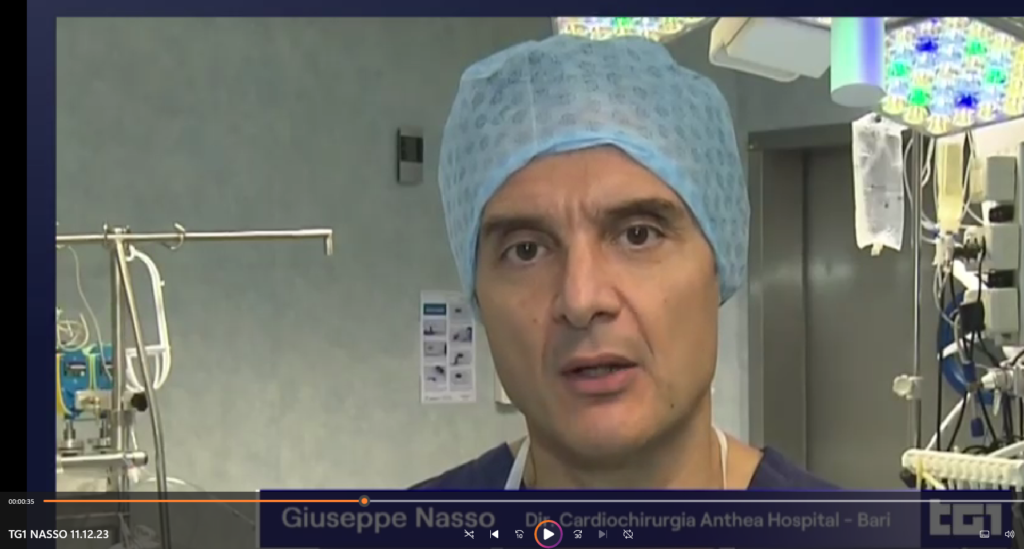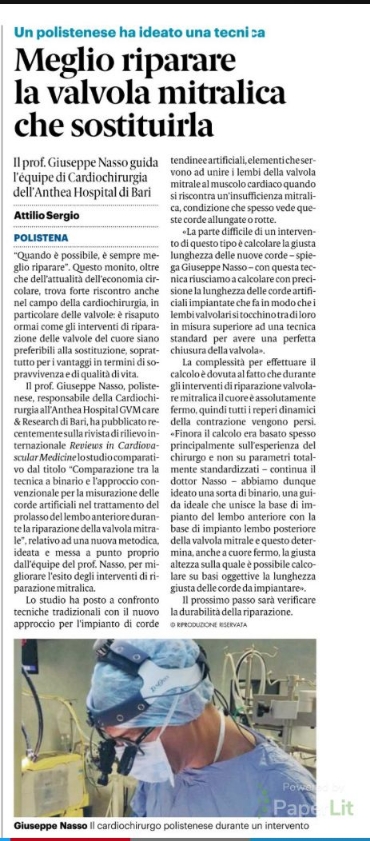
Meglio riparare le valvola mitralica che sostituirla
La riparazione della valvola mitrale
La riparazione della valvola mitrale è una procedura chirurgica critica che comporta la riparazione della valvola mitrale del cuore, che separa l’atrio sinistro dal ventricolo sinistro. Un passaggio cruciale in questo processo è la misurazione delle corde artificiali, che vengono utilizzate per sostituire le corde danneggiate o rotte nella valvola mitrale. Tradizionalmente, la lunghezza di queste corde artificiali viene stimata in base all’esperienza e alla valutazione visiva del chirurgo, il che può portare a misurazioni imprecise e risultati di riparazione non ottimali.
I primi risultati di questa nuova tecnica sono ottimi, da come li descrive il Dr. Nasso Giuseppe che ha ideato la tecnica. Mostra risultati ottimali, tra cui eccellenti percentuali di successo e buona stabilità della riparazione al follow-up di 1 anno. Ha il potenziale per migliorare i risultati chirurgici per i pazienti e aumentare l’accuratezza della misurazione della lunghezza delle corde artificiali.
The fate of patients after failed epicardial ablation of atrial fibrillation
Much debate is still going on about the best ablation strategy—via endocardial or epicardial approach—in patients with atrial fibrillation (AF), and evidence gaps exist in current guidelines in this area. More specifically, there are no clear long-term outcome data after failed surgical AF ablation.
Background: Much debate is still going on about the best ablation strategy—via endocardial or epicardial approach—in patients with atrial fbrillation (AF), and evidence gaps exist in current guidelines in this area. More specifcally, there are no clear long-term outcome data after failed surgical AF ablation.
Methods: Since June 2008, 549 surgical AF ablation procedures through a right minithoracotomy were performed at our institution. From 2008 to 2011, a unipolar radiofrequency device was used (151 patients), whereas from 2011 to 2020 a bipolar radiofrequency device was used (398 patients). Patients were scheduled for surgery on the basis of the following criteria: recurrent episodes of paroxysmal or persistent lone AF refractory to maximally tolerated antiarrhythmic drug dosing and at least one failed cardioversion attempt. Besides the recommended follow-up by the local
cardiologist, starting from 2021, surviving patients were asked to undergo assessment of left ventricular function and to complete a questionnaire addressing quality of life and predisposing factors for recurrent AF.
Results: At a mean follow-up of 77 months, the rate of AF recurrence was 20.7% (n=114). On multivariate analysis, impaired left ventricular ejection fraction (58 patients, 51%, p=0.002), worsening of European Heart Rhythm Association (EHRA) symptom class (37 patients, 32%, p=0.003) and cognitive decline or depression (23 patients, 20%, p=0.023) during follow-up were found to be signifcantly associated with AF recurrence.
Conclusions: Surgical AF ablation through a right minithoracotomy is safe, but a better outcome could be achieved using a hybrid approach. Patients after initial failed surgical AF ablation show worsening of cardiac function, clinical status and quality of life at follow-up compared to patients with successful AF ablation.
Keywords: Atrial fbrillation, Surgical ablation of atrial fbrillation, Catheter ablation of atrial fbrillation
